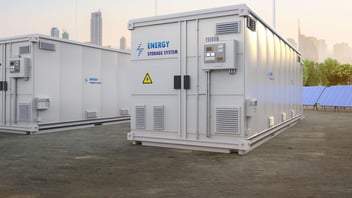What Does 'Air Quality' Really Mean?
.jpg?width=1920&height=1080&name=Untitled%20design%20(72).jpg)
It’s been a few weeks since Canadian Wildfires blanketed the New York sky in a smokey, orange hue that made the entire state look like the questionable film coloration that movies use to scream “This movie is set in the Middle East!” or “Wow, it’s a hot and scary day in South America.”
But while many of our West Coast brethren were saying “welcome to our world,” many of us found ourselves chaotically googling “air alert what means” or “air number what is bad?” A large number of people were introduced to the Air Quality Index as a color-gradient scale on their iPhones, warning them under no circumstances to go outside. In reality, Air Quality has big ramifications for the health of communities even in non-wildfire times. (And let’s be real, climate change is making the wildfire times a lot more frequent, anyway).
So, here’s a quick rundown of what the Air Quality Index actually is:
Basically, the AQI measures the amount of pollution in the air on a scale from 1-500. Below a reading of 100, the air pollution is at a level below that which is “known to cause adverse health effects.”
What is actually being measured are five types of pollution: ground-level ozone, particulates, carbon monoxide, nitrogen dioxide, and sulfur dioxide.
Once the number gets above 100, certain groups start to be at risk. Think of it like post-vaccine COVID: the virus is out there, but more dangerous for some folks than others. The more perilous the virus itself, the more people are at risk. The Air Quality Index works basically the same way: between 100-300, older folks, people with respiratory issues, and young children are more at risk than healthy adults. Over 300, we’ve all got a problem.
The wildfires put AQI levels throughout much of the American Northeast at “STAY THE HECK INSIDE” levels for a few days, and fortunately, much of the acute risk has subsided. But we can’t just be foul-weather air quality fans. It is absolutely within our power to get that AQI number to a level that mitigates risk for our most vulnerable populations as well. Renewable energy sources like Solar and Wind don’t only serve to slow climate change (and thus reduce the number of Big Air Problem Events like wildfires), but they also result in cleaner everyday air than the natural gas and coal-burning alternatives.
The immediate ways to protect yourself from poor air quality are limiting time outside and wearing a mask when you do step out, but some long-term ways are to start thinking about energy usage and renewable resources as allies in the proverbial fight for clean air. Because while melting icebergs and sinking islands are very real, arresting consequences of our changing climate, for most of us those are repercussions in lands far away. The air we breathe is here, today, and it’s critical for our individual survival (obviously) but also for the survival of the plants and animals that keep our air clean. It’s an air-purifying feedback loop.
So, as we all strap in for what looks like another few weeks of dangerous air, let’s take a few deep breaths (inside) and think seriously about how to keep it cleaner in and for the future.

.jpg?width=352&name=Untitled%20design%20(24).jpg)
.jpg?width=352&name=Untitled%20design%20(17).jpg)
